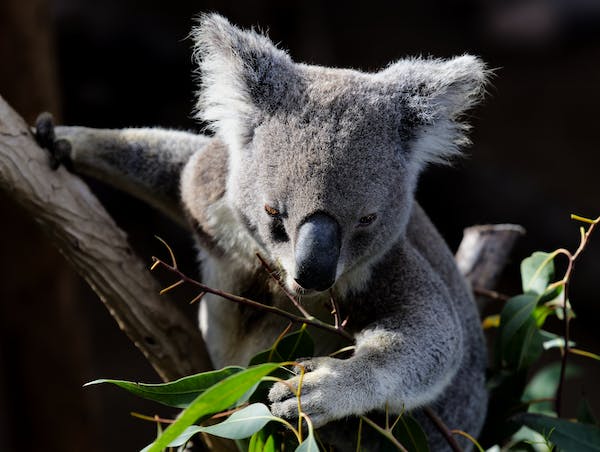Covering an area of 7,617,930 square kilometers, Australia is the sixth-largest country and is often considered the largest island in the world, if not labeled as the continent. With its vastness and isolated location, it’s no surprise that it’s home to various types of biomes that support the teeming animal and plant life in the region. Here, we’ll delve deeper into these major wildlife habitats that will prove why Australia is one of the most important nations for the world’s biodiversity.
Tropical And Subtropical Moist Broadleaf Forests
Situated in Northeastern Australia, these forests are generally found along the equatorial belt, receiving high levels of rainfall and experiencing mainly warm temperatures. Forests are mostly composed of evergreen and semi-evergreen deciduous tree species. The Queensland Tropical Rainforests, the Lord Howe Island Subtropical Forests, and the Norfolk Island Subtropical Forests are classified under this biome.
While these forests only make up a small chunk of Australia’s big landmass, 65% of the fern species, 50% of bird species, and 36% of mammal species thrive in these regions. Some of the notable animals that live in these areas include the southern cassowary, spotted-tailed quolls, and the ring-tail possum.
Tropical And Subtropical Grasslands, Savannas, And Shrubland
Tree growth is inhibited in many areas throughout the country due to the lack of extensive rainfall. Nevertheless, it’s able to create and support grasslands, savannas, and shrublands in large expanses of land. Some of the best examples of this ecosystem include Cape York, Top End, Victoria Plains, Kimberley, and Carpentaria tropical savannas.
Endemic to these regions are more than tracheophytes (vascular plants) and various species of frog and fish. Some of the native mammals that live in this habitat include wallabies, kangaroos, wallaroos, wombats, and possums.
Temperate Broadleaf And Mixed Forests
Found in areas with wide precipitation and temperature variability, temperate broadleaf, and mixed forests can be found from southeast Queensland to South Australia. These forests are mainly composed of deciduous trees and some evergreens. Acacia and Eucalyptus are the most common tree species.
The Southeast Australia Temperate Forests, and Eastern Australian Temperate Forests are two of the five ecoregions in Australia that compose this biome. These areas boast high endemism and serve as a refuge for an incredibly diverse spectrum of plant and animal species. Local wildlife in these habitats includes koalas, velvet worms, kookaburras, cockatoos, rosellas, thornbills, potoroos, and gliders.
Mediterranean Forests, Woodlands, Scrubs
Mediterranean ecoregions are a rare wildlife habitat as it’s only found in a few places on the Earth. Despite this, it’s blessed with a wide range of biodiversity. Animal species thriving here include the brush-tailed phascogale, southern brown bandicoot, western ringtail possum, common death adder, honey possums, and the endangered western quoll. Birds including the emu, western ground parrots, and western bristlebirds inhabit the heath vegetation. These ecoregions experience hot and dry summers and cool and moist winters. The Eyre Yorke Block, Naracoorte woodlands, and Esperance mallee are under this biome.
Temperate Grasslands, Savannas, And Shrubland
Generally flat and lacking in tree cover, what makes this temperate biome different from its tropical equivalent is that they are relatively cooler, and have wider annual temperatures throughout the year. Some of the animals that call this habitat home include the bilbies, kultarrs, wallabies, and birds like the red goshawk, bush stone-curlew, superb parrot, and plains-wanderers. Sadly, much of these regions were converted to wheat cropping and sheep rearing and only small parts of the original areas remain.
Montane Grasslands And Shrublands
Located in south-eastern Australia, these montane grasslands can be found in the Australian Alps about 1,300 meters above sea level. With the colder climate and high altitude, the environment is quite harsh but still serves as a refuge for lots of wildlife including the mountain pygmy possum, Baw Baw frog, corroboree frog, and Alpine thermocolor grasshoppers. Animals found in the lower regions include swamp wallabies, red-necked wallabies, platypuses, and short-beaked echidnas. Most parts of this habitat have long been protected and have not been exposed to the same disturbance and destruction in the other regions.
Deserts And Xeric Shrublands
While desert and xeric shrublands experience varying rainfall, they experience rapid evaporation rates, with moisture even evaporating quicker than it falls. As such, its characteristic is the same as most deserts. Searing heat happens during daytime, while nighttime is cold. The Gibson Desert, Great Victoria Desert, and the Great Sandy–Tanami desert are under this biome. Animals that have adapted to this habitat include the desert tree frog, great desert skink, sandhill dunnart, southern marsupial mole, water-holding frog, sand goanna, and many types of lizards. Birds like the malleefowl and Chestnut-breasted whiteface live in the edges of the region.
Tundra
The Australian tundra habitats are treeless polar deserts situated in the sub-Antarctic islands. Due to the harsh climates, no native land mammals, reptiles, and amphibians thrive in these regions. Yet, they are the perfect breeding grounds for different species of seal like the Australasian fur seal, Antarctic fur seal, southern elephant seal, New Zealand sea lion, and the subantarctic fur seal, Antarctic fur seal.
Birdlife is teeming as well, with half of the world’s albatross species can be found in the islands, such as the southern royal albatross, Campbell albatross, Salvin’s albatross, and white-capped albatross. Other seabirds and penguins also breed in the region. Unfortunately, many species also disappeared upon human’s discovery of the islands. Macquarie Island parakeet and the Macquarie Island rail are now both extinct.
Takeaway
With such an array of wildlife habitats, it’s little wonder why Australia’s biodiversity is among the most unique in the world. It’s part of the only 17 megadiverse countries in the world chosen for their high rates of endemism, geographical isolation, and distinct natural domains. Thus, attesting solidifying Australia’s immense value to the world’s biodiversity.
